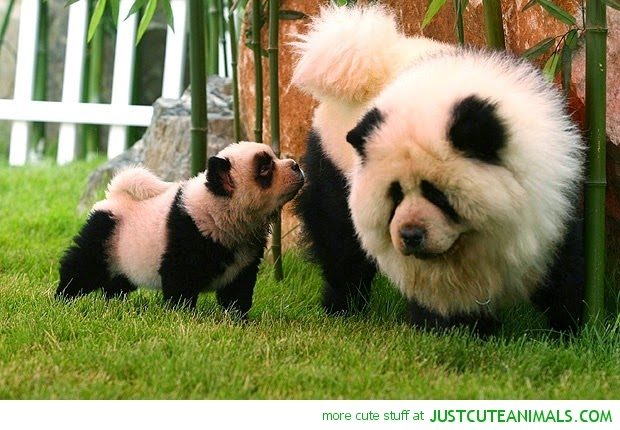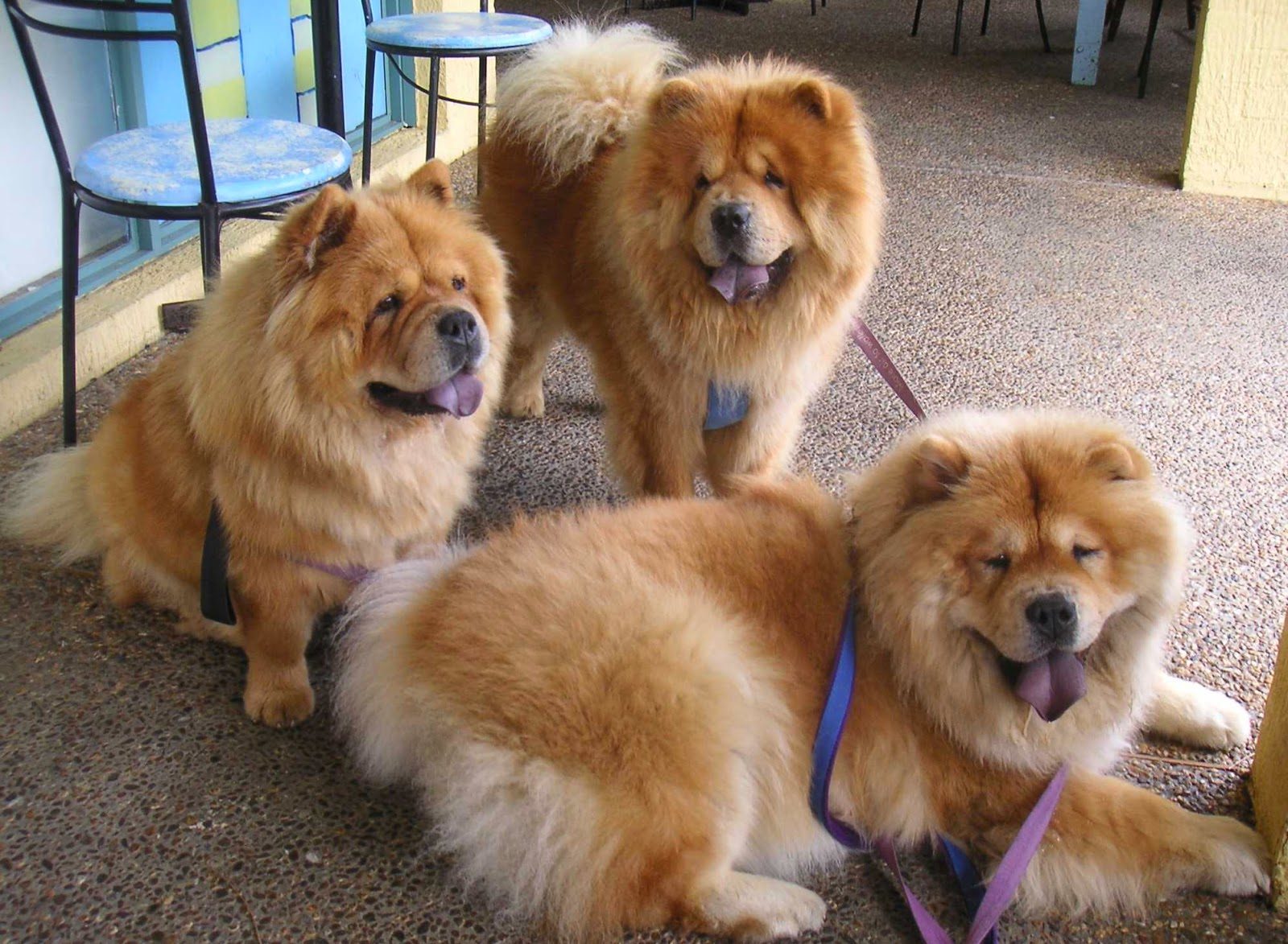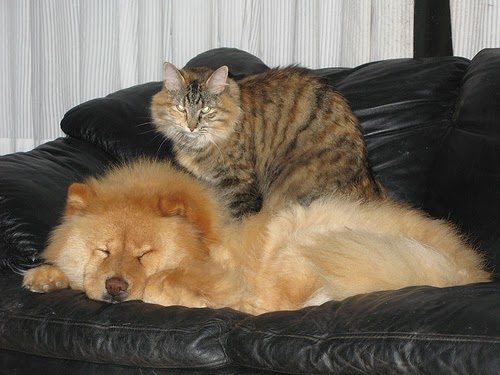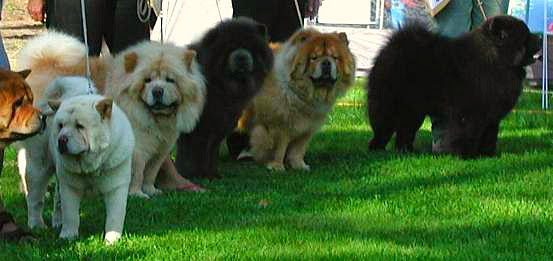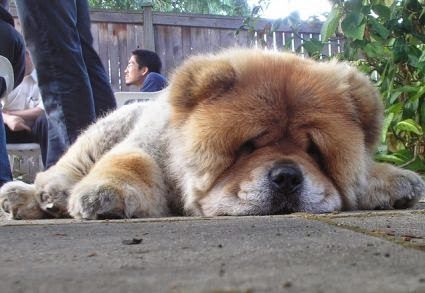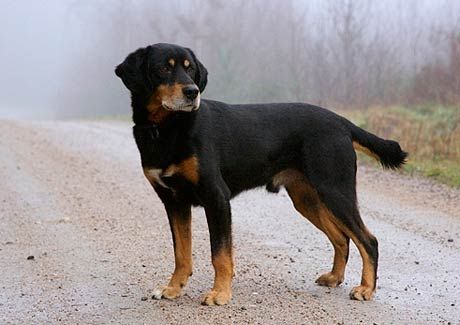- Chow Chows are very independent and aloof, and they need an owner who appreciates those traits but won’t let the dog take over.
- Chows should be well socialized — introduced to new people, dogs, and situations beginning in early puppyhood — to ensure that they’re safe and relaxed as adults.
- Chow Chows may bond with just one person or to their immediate family. They’re suspicious of strangers.
- Chows need to be brushed two or three times a week to keep their coat in good condition.
- Chows can live in apartments or condos, so long as they get daily exercise.
- Because of his deep-set eyes, the Chow Chow has limited peripheral vision; it’s best to approach him from the front.
- To get a healthy dog, never buy a puppy from a puppy mill, a pet store, or a breeder who doesn’t provide health clearances or guarantees. Look for a reputable breeder who tests her breeding dogs to make sure they’re free of genetic diseases that they might pass onto the puppies and who breeds for sound temperaments.
Breed standards
UKC group: Northern Breed Group
Average lifespan: 9 – 13 years
Average size: 45 – 70 pounds
Coat appearance: Rough or smooth, puffy appearance
Coloration: Black, red, cinnamon, cream and blue
Hypoallergenic: No
Other identifiers: Double coat with lion-like appearance; large and stocky body type with broad head and wide nostrils; blue-black tongue; dark, almond-shaped eyes; broad chest with tail set high
Possible alterations: N/A
Comparable Breeds: German Shepherd, Chinese Shar-Pei
History
The Chow is a unique breed of dog thought to be one of the oldest recognizable breeds. Research indicates it is one of the first primitive breeds to evolve from the wolf.DNA analysis confirms that this is one of the oldest breeds of dog that probably originated in the high steppe regions of Siberia or Mongolia, and much later used as temple guards in China, Mongolia and Tibet. A bas-relief from 150 BC (during the Han Dynasty) includes a hunting dog similar in appearance to the Chow. Later Chow Chows were bred as a general-purpose working dog for herding, hunting, pulling, and guarding. From what records survive, some historians believe that the Chow was the dog described as accompanying the Mongolian armies as they invaded southward into China as well as west into Europe and southwest into the Middle East in the 13th century AD.
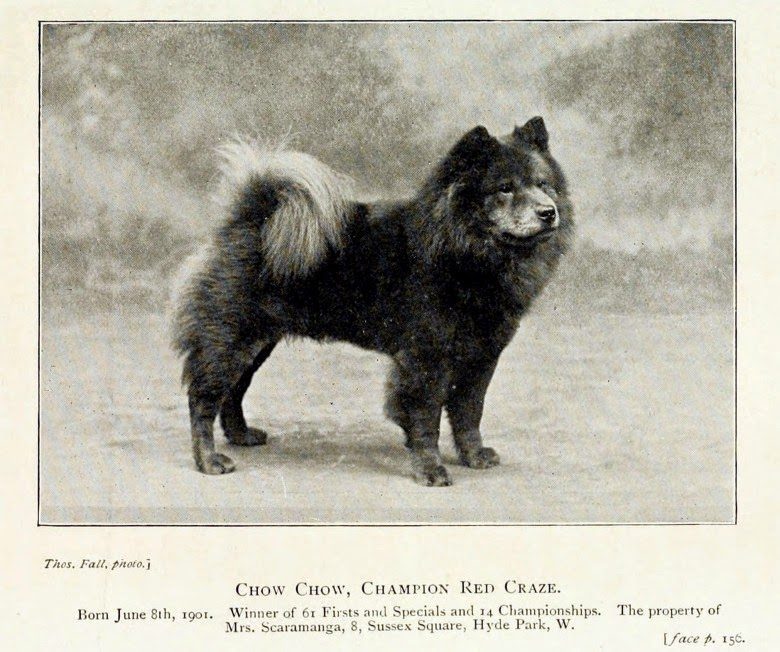
Research indicates it is one of the first primitive breeds to evolve from the gray wolf, and is thought by many to have originated in the arid steppes of northern China and Mongolia, although other theorists conjecture that its origin is in Siberian regions of Asia.
The black tongued Chow Chow was also bred for human consumption. Some scholars claim the Chow Chow was the original ancestor of the Samoyed, Norwegian Elkhound, Pomeranian, and Keeshond.
Chinese legends mention large war dogs from central Asia that resembled black-tongued lions. One Chinese ruler was said to own 5,000 Chows. The Chinese also used Chows to pull dog sleds, and this was remarked upon by Marco Polo.
A legend says that the original teddy bears were modeled after Queen Victoria’s Chow Chow puppy. It is said that she carried the dog everywhere she went. Her friends disapproved, claiming that it did not befit a queen to be seen everywhere with a dog, so they paid a dressmaker to make a stuffed version of the animal for her.
Today, the AKC registers approximately 10,000 Chow Chows a year. The Canadian Kennel Club registers approximately 350.
Temperament and Personality
Despite his teddy-bear appearance, the Chow Chow is not a lovey-dovey kind of dog. He is independent and dignified, usually attaching himself to a single person. The Chow is protective and will certainly have affection for his entire family, but most of his devotion will be given to that one special person. Children may be disappointed in the Chow’s complete lack of interest in cuddling or being hugged.
He is distrustful of strangers and may be aggressive toward dogs he doesn’t know. The Chow is highly territorial. Intruders or people he doesn’t know will be warned off with a deep growl and perhaps something a little more physical if they don’t take the hint.
This intelligent but sometimes stubborn dog can be a challenge to train. He responds well to clicker training and positive reinforcement techniques such as play, praise and food rewards, but he also likes to do things his own way. To be successful, you must be patient and you must be willing to try many different methods to see what works. Find a trainer who has an extensive bag of tricks and is experienced with spitz breeds. Keep training sessions short and fun so the Chow Chow doesn’t get bored.
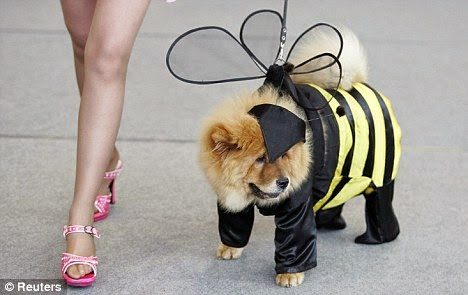
Start training your puppy the day you bring him home. Even at eight weeks old, he is capable of soaking up everything you can teach him. Don’t wait until he is 6 months old to begin training or you will have a more headstrong dog to deal with. If possible, get him into puppy kindergarten class by the time he is 10 to 12 weeks old, and socialize, socialize, socialize. However, be aware that many puppy training classes require certain vaccines to be up to date, and many veterinarians recommend limited exposure to other dogs and public places until puppy vaccines . In lieu of formal training, you can begin training your puppy at home and socializing him among family and friends until puppy vaccines are completed.
Talk to the breeder, describe exactly what you’re looking for in a dog, and ask for assistance in selecting a puppy. Breeders see the puppies daily and can make uncannily accurate recommendations once they know something about your lifestyle and personality. Whatever you want from an Chow Chow, look for one whose parents have nice personalities and who has been well socialized from early puppyhood.
Health
They are prone to suffer eye irritation called entropion, caused by eyelid abnormality; this can be corrected with surgery. Also prone to hip dysplasia, stomach cancer, hot spots and ear infections. Because of their relatively short muzzles they often snore.
Living Conditions
The Chow Chow will do okay in an apartment if it is sufficiently exercised. It is relatively inactive indoors and a small yard is sufficient. Sensitive to heat, can live in or outdoors in cooler weather.
Exercise
Chow Chows can be lazy, but need to be taken for a daily walk. Dogs that do not get to go on daily walks are more likely to display a wide array of behavior problems.
Care
Chows can adapt to a variety of homes, from palaces to apartments. But they should always live indoors with their people, not stuck out in a backyard or kennel. They don’t tolerate heat well, so keep them indoors when the weather is sweltering.
Like any dog, an adult Chow Chow needs daily exercise to stay healthy and happy, but not much — he’ll be satisfied with a couple of 15-minute walks daily or one longer walk.
A Chow Chow is a homebody who’s not prone to wandering, but you’ll still want a secure fence if you’ve got a yard; it will protect him from traffic and prevent strangers from approaching him when you’re not around to supervise.
Chows are easily housetrained, but crate training is strongly recommended. Crates make housetraining easier and keep your Chow from chewing things while you’re away. The crate is a tool, not a jail, however, so don’t keep your Chow locked up in it for long periods. The best place for a Chow is with you.
Chows are more than capable of learning anything you can teach, and a verbal correction is usually all that’s required to set them straight. No dog should ever be hit, but it’s especially counterproductive with this breed. The fiercely proud and independent Chow will never respond to physical abuse. Earn his respect in puppyhood with firm consistency, and you won’t have any problem training him. But if you let the cute pup have his way all the time and then try to train him, you’re sure to face problems.
Grooming
The Chow comes in two coat types: rough and smooth. Both have an undercoat and a top coat. The rough has an abundant coat that stands off from the body. The head is framed by a profuse ruff, and the tail is plumed. The legs have feathering as well. The smooth does not have the abundance of top coat that characterizes the rough, and he lacks a ruff and feathering on the tail and legs. In all other respects, the coats are the same.
Grooming requirements depend on the type of coat. A smooth coated Chow needs brushing only weekly. One with a rough coat should be brushed every other day. Both varieties shed heavily twice a year, during which time the coat will come out in handfuls. A bath is rarely necessary, although a warm bath followed by a very thorough blow-drying can help remove that shedding coat.
The rest is basic care. Trim the nails as needed, usually once a month. Brush the teeth frequently for good overall health and fresh breath. Check the ears weekly for dirt, redness or a bad odor that can indicate an infection. If the ears look dirty, wipe them out with a cotton ball dampened with a gentle ear cleaner recommended by your veterinarian.
Is this breed right for you?
A great guard dog, the Chow Chow does well with all family members and pets if raised with them, but does best as a one-woman dog. In need of good leadership from its owner and proper obedience training, this breed will need a calm and confident leader who is consistent with him. If the Chow Chow does not receive this, he will believe himself to be the alpha and have the potential for behavioral problems. Due to his dense coat, this breed requires a lot of grooming and sheds often. The Chow Chow will do OK in apartment life if he is exercised regularly. Known as an inside dog, the breed cannot withstand warmer climates due to his double coat.
Children and other pets
When they’re raised with children, Chow Chows can do well with them, but they’re not a rough and tumble dog that will tolerate a lot of abuse from a young child. Chows do best in families with older children who understand how to treat a dog.
As with any dog, always teach children how to approach and touch your Chow, and supervise all interactions between dogs and young children to prevent any biting or ear pulling from either party.
Chows who are socialized and trained well can get along with other dogs and cats, especially if they’re introduced to them in puppyhood. They do best, however, with dogs of the opposite sex; they may fight with dogs of the same sex.
Did You Know?
A blue-black tongue is one of the Chow’s most distinctive physical traits. When Chow puppies are born, their tongues are pink but darken to blue-black by the time they are 8 to 10 weeks old.
Famous Chow Chow owners
- Konrad Lorenz, an Austrian zoologist, ethologist, and ornithologist, winner of the 1973 Nobel Prize who is often regarded as one of the founders of modern ethology, had a Chow Chow mix named Stasi. He wrote about his dogs in his book King Solomon’s Ring.
- Sigmund Freud had a Chow Chow named Jo-Fi who attended all of his therapy sessions because he felt that dogs had a special sense that allows them to judge a person’s character accurately, and admitted he depended on Jo-Fi for an assessment of a patient’s mental state.
- Martha Stewart owns several chows, which are frequently seen on Stewart’s shows, one of them named Genghis Khan.
- President Calvin Coolidge and his wife owned a black Chow named Timmy. Chow Chows were also popular in the 1930s and 1980s.
- Vanna Bonta has a cream Chow Chow named Sky in a line of her breed of choice, a blue Chow Chow she had named Seraph, and a red Chow Chow named Beowulf who was immortalized as a fictional dog in the book Flight.
- Janet Jackson had a Chow Chow named Buckwheat.
- Italian footballer Mario Balotelli bought his girlfriend two Chow Chow puppies in the UK.
- Walt Disney famously gave his wife Lillian a Chow Chow puppy named Sunnee in a hatbox as a Christmas gift, later inspiring a similar scene in the Disney animated film Lady and the Tramp.
A dream day in the life of a Chow Chow
A lazy breed, the Chow Chow would be completely content staying indoors alone all day long. However, since this does not best suit him, his owner should take him on a short walk in the cool morning air. After a quick training session, the Chow Chow will be happy to hang around with his master while keeping his home safe from harm and strangers.

